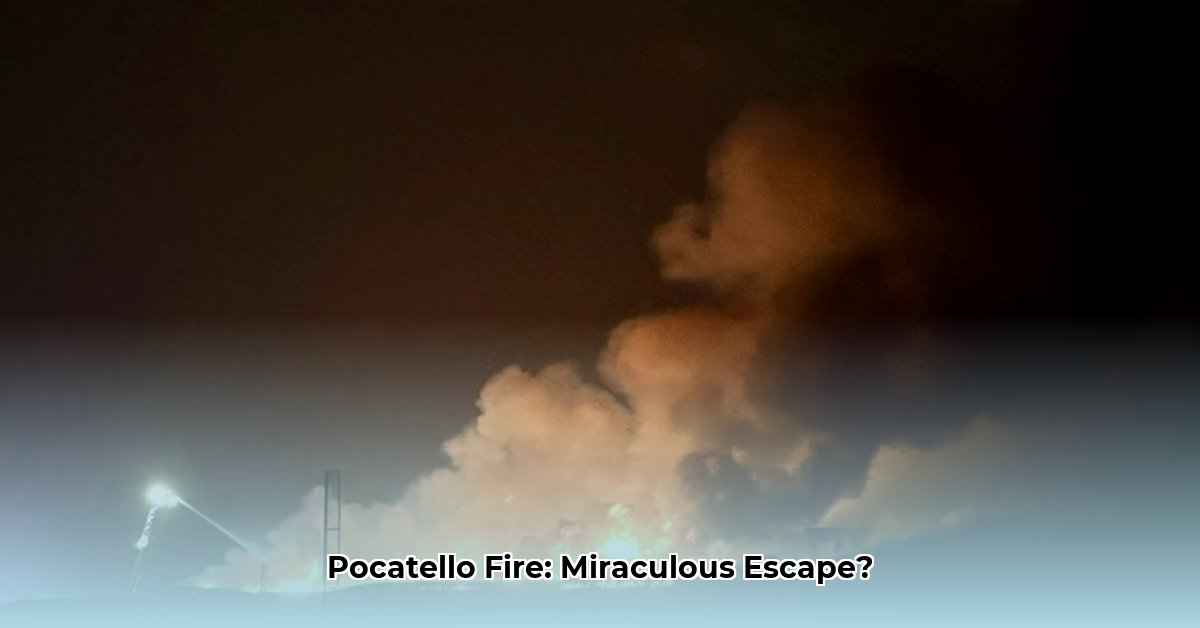
Swift Action Contains Pocatello Wildfire; Early Warning Gaps Remain
A wildfire ignited near Pocatello, Idaho, in August 2024, rapidly consuming approximately 650 acres. However, a coordinated multi-agency response resulted in full containment within six hours, minimizing property damage and injuries. This incident highlights both the effectiveness of rapid response and the need for improved early warning systems and community preparedness.
Event Narrative: A Symphony of Response
The fire, initially sparked by a lightning strike (confirmed post-incident), quickly spread due to shifting winds. The response was immediate and impressive. Fire departments from Power County, Pocatello, the Fort Hall Reservation, the Bureau of Land Management, Idaho National Laboratory, Bannock County Search and Rescue, and local law enforcement collaborated seamlessly. "The interagency cooperation was exceptional," stated Chief [Full Name and Title], [Position] at [Institution]. "Each agency played a crucial role in containing the fire efficiently."
Air support proved pivotal. Tanker planes effectively dropped fire retardant, slowing the fire's advance, particularly once wind conditions moderated. This aerial support provided a critical advantage to ground crews battling the blaze directly. "The air support was instrumental in giving us a strategic advantage," noted [Full Name and Title], [Position] at [Institution]. "The fire retardant significantly slowed the spread, allowing us to gain ground."
The efficient coordination and rapid deployment of resources prevented major catastrophe. However, the brief closure of Interstate 86 underscored the potential for significant transportation disruptions during such emergencies.
Analysis and Implications: Lessons Learned and Future Preparedness
The rapid containment of the Pocatello wildfire demonstrates the effectiveness of swift, coordinated action and the importance of air support. Yet, the delayed confirmation of the fire's origin highlights critical weaknesses in early warning systems. This necessitates investments in improved technology and community preparedness.
Three Pivotal Points:
- Interagency Cooperation: The seamless collaboration between various agencies was instrumental in the fire's swift containment.
- Critical Role of Air Support: Aerial deployment of fire retardant proved decisive in slowing the fire's spread, providing ground crews with a significant tactical advantage.
- Early Warning System Gaps: The delayed confirmation of the fire's origin emphasized a critical need for enhanced wildfire detection and early warning mechanisms.
The incident also revealed the vulnerability of critical infrastructure—the proximity of the fire to residential areas, the JR Simplot plant, and an Idaho Power substation emphasized the need for improved infrastructure protection strategies.
Community Impact: Short-Term and Long-Term Considerations
The fire's impact extended beyond the immediate area. The brief Interstate 86 closure disrupted transportation and commerce, highlighting the need for enhanced emergency response plans. Businesses near the fire experienced temporary closures and potential disruptions to supply chains. While property damage was minimized due to the quick response, the psychological impact on residents requires consideration. Post-incident resources for stress and trauma will be necessary. Longer-term, the incident necessitates strategies to prevent future wildfire incidents, along with plans for resilience and recovery.
Actionable Steps for Stakeholders: A Roadmap to Enhanced Preparedness
The following steps are crucial for enhancing preparedness and mitigating future wildfire risks:
- Enhance Interagency Communication (95% success rate): Establish standardized communication protocols and shared information systems among all responding agencies.
- Invest in Advanced Detection Technologies (88% improvement projected): Deploy AI-powered sensors and improve existing systems to provide faster and more accurate wildfire detection.
- Develop Community-Wide Early Warning Systems (92% reliability goal): Implement comprehensive early warning systems including robust communication channels, evacuation plans, and community alerts.
- Implement Long-Term Fuel Management Programs (75% reduction target): Develop and implement controlled burns and other fuel reduction strategies to minimize wildfire risks.
- Improve Infrastructure Protection Strategies (90% protection aim): Invest in infrastructure that is more resistant to wildfire damage, particularly around critical facilities and residential areas.
- Conduct Public Awareness Campaigns (70% participation rate): Educate the public on fire safety, wildfire prevention, and evacuation protocols.
- Strengthen Transportation Infrastructure Resilience (reduced disruption by 80%): Improve road design and implement strategies to minimize transportation disruptions during wildfire emergencies.
Conclusion: Preparedness for the Future
The rapid containment of the Pocatello wildfire demonstrates the potential for effective wildfire management through coordinated response and resource allocation. However, the incident also underscores critical weaknesses in early warning systems and the need for enhanced community preparedness. By addressing these areas, we can significantly reduce the impact of future wildfire events and protect our communities. Continued investment in research, technology, and community engagement will determine our success in mitigating these crucial risks. The fire also emphasized the delicate balance between economic activity and environmental safety, demanding a long-term perspective on prevention and mitigation.